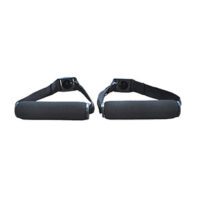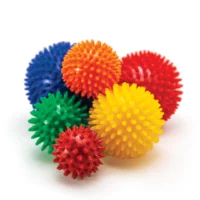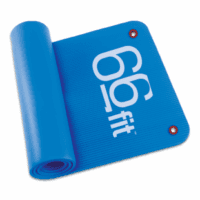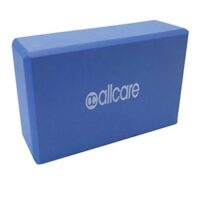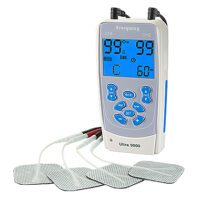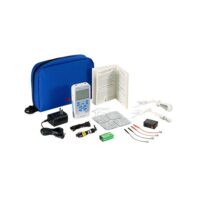Running Analysis
Article by John Miller


Running Analysis
The Key to Enhanced Performance and Injury Prevention
Running transcends being just a sport; it’s a path to wellness. Yet, to excel and stay injury-free, understanding your running mechanics is essential. This article, from a physiotherapist’s lens, dives into the world of running analysis, unraveling its role in enhancing performance and preventing injuries.
Understanding Your Run
Every runner’s style is distinct, pivotal for boosting performance and sidestepping injuries. Running analysis shines a light on technique, foot placement, and movement limitations, spotlighting areas like joint stiffness, muscle tightness, or weakness.

Common Running Injuries
Runners often face injuries like runner’s knee, Achilles tendinitis, shin splints, and plantar fasciitis. These ailments stem from overuse, improper footwear, or biomechanical imbalances. Understanding these common injuries is the first step towards prevention and effective treatment.
The Role of Physiotherapy in Running Analysis
Physiotherapists, particularly those specialising in running injuries, are crucial. They identify biomechanical faults in the lower limb and pelvis that elevate injury risks. Their video assessment of your running form pinpoints issues, leading to customised solutions.
Biomechanical Assessments in Running
Gait analysis and biomechanical assessments are vital in running analysis. Advanced technologies like video or motion capture offer a detailed view of your running mechanics, essential for precise adjustments.
Shoes and Orthotics
Choosing suitable shoes is key, and running analysis aids this decision. It also determines if orthotics are necessary for additional support and alignment.
Benefits of Physiotherapy in Running
Physiotherapy plays a monumental role in treating and preventing running injuries. It offers strategies like strength training, flexibility exercises, and advice on proper running techniques. Physiotherapists tailor rehabilitation programs to individual needs, ensuring a swift and safe return to running.
Performance Improvement and Injury Prevention
Running analysis not only helps in injury prevention but also in performance enhancement. By fine-tuning your running mechanics, you can improve efficiency, speed, and endurance. Preventive measures like warm-up routines, appropriate footwear, and regular physiotherapy consultations keep injuries at bay and enhance overall performance.
Conclusion
Investing time in running analysis and embracing physiotherapy’s benefits can revolutionise your running journey. It optimises technique, elevates performance, and reduces injury risks. Whether a novice or a seasoned runner, running analysis and physiotherapy are indispensable tools for achieving your running goals safely and effectively.
What to Do?
Seek a physiotherapist’s knowledge for a personalised running analysis. They’ll guide you to your running objectives, ensuring a balanced approach to performance and health.
Related Articles
- Post-Run Soreness: Should You Be Concerned? – Readers can learn about differentiating between muscle injury and delayed onset muscle soreness (DOMS) after running.
- Running Recovery: 6 Helpful Tips – Offers advice on managing post-run recovery, including the use of ice, heat, and recovery equipment.
- ITB Syndrome – This article discusses knee-related issues like ITB Syndrome, common in runners, and other knee conditions.
- Runners: How To Reduce Your Knee Stress – Provides strategies for runners to minimise stress on their knees, a common area of concern.
- Common Running Injuries – An overview of typical injuries runners face, which would complement the original article’s focus.
- Running Pain: A Physiotherapist’s Guide – Offers insights into the nature of running pain and when to seek help.
- Biomechanical Analysis: Key To Injury Prevention – Discusses the importance of biomechanical analysis in preventing running injuries.
- Common Muscle Injuries – Provides general information on muscle injuries that could occur from running.
- Knee Arthritis in Runners – Addresses how arthritis affects runners, especially in the knee area.
- Muscle Strains – Focuses on muscle strains and related conditions as common causes of knee pain in runners.
- Runners Knee – A comprehensive guide on Runner’s Knee, its causes, symptoms, and treatment.
- Three Tips To Improve Your Running Efficiency! – Practical advice on enhancing running technique for better performance and injury prevention.
Article by John Miller
Common Running Injuries
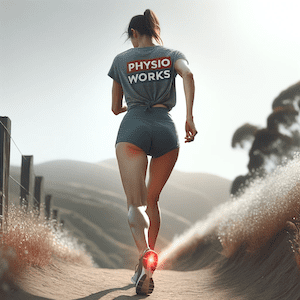

Running is a popular and accessible exercise cherished for its ability to keep individuals fit and healthy. However, this high-impact activity also comes with the risk of developing injuries. Runners commonly experience pain and discomfort in various areas of their bodies, particularly in the hips, knees, ankles, and feet. The repetitive impact and stress on muscles and joints during running can take a toll, mainly if you disregard early signs of injury.
This article aims to shed light on common running injuries, covering a range of conditions that runners may encounter, starting with knee, shin, and calf injuries. It also provides information on the runner's knee, ITB syndrome, shin splints, stress fractures, and more. Understanding these injuries and seeking appropriate treatment is vital for maintaining a safe and enjoyable running experience. If you require further guidance concerning your running assessment, do not hesitate to contact the experienced team at PhysioWorks.
Read the full article on common running injuries from the links below.
Knee, Shin and Calf Injuries
Knee Pain
- Runners Knee
- ITB Syndrome
- Patellofemoral Pain Syndrome
- Patellar Tendinopathy
- Chondromalacia Patella
- Meniscus tears
- Plica Syndrome
- Fat Pad Syndrome
- Popliteus Tendinopathy
- Bursitis Knee
- Pes Anserinus Syndrome
- Knee Arthritis
Children’s Knee Conditions
Shin Pain
Calf Pain
Achilles, Ankle, Heel & Foot Conditions
Achilles and foot tendinopathies are common conditions that can affect runners and cause significant discomfort and limitations in their training. The Achilles tendon, peroneal tendons, Tibialis posterior tendon, and FHL tendon are prone to developing tendinopathies, characterised by pain, stiffness, and inflammation in the affected areas. Achilles tendon rupture may occur in severe cases, requiring immediate medical attention. Additionally, runners may experience retrocalcaneal bursitis, heel injuries such as Severs Disease and heel spurs, and various foot injuries like plantar fasciopathy (plantar fasciitis), metatarsalgia, Morton's neuroma, and foot stress fractures.
This article section aims to provide valuable insights into these conditions, their causes, symptoms, and potential treatment options to help runners better understand and address these issues. To learn more about Achilles and foot tendinopathies and other running injuries, continue reading the full article via the link.
Achilles and Foot Tendinopathies
- Achilles Tendinopathy
- Achilles Tendon Rupture
- Peroneal Tendinopathy
- Tibialis Posterior Tendinopathy
- FHL Tendinopathy
Ankle Injuries
Heel Injuries
Foot Injuries
- Plantar Fasciopathy (Plantar Fasciitis)
- Metatarsalgia
- Morton's Neuroma
- Foot Stress Fracture
- Pes Planus (Flat Feet)
Thigh, Hamstring, Groin & Hip Injuries
Thigh and hip injuries are common occurrences among runners and can significantly impact their training and performance. These injuries include pulled thigh muscles, hamstring strains, groin strains, ITB syndrome, proximal hamstring tendinopathy, and hip joint pain.
Conditions like hip arthritis, hip labral tear, femoroacetabular impingement (FAIS), lateral hip pain, gluteal tendinopathy, greater trochanteric pain syndrome, adductor-related groin pain, and hip flexor strains can also affect runners. The article aims to provide comprehensive information on these conditions, including their causes, symptoms, and potential treatment options, empowering runners to understand better and manage these injuries. To gain a deeper understanding of thigh and hip injuries and other common running injuries, continue reading via the article link.
Thigh & Hamstring Pain
Hip Joint Pain
Lateral Hip Pain
Adductor-related Groin Pain
Muscle, Bone & Back Injuries
Finally, muscle, bone and back injuries are frequent concerns among runners and can significantly affect their training progress and overall performance.
Common muscle injuries include thigh muscle strains, hamstring strains, calf strains, ITB syndrome, popliteus syndrome, cramps, and DOMS (Delayed Onset Muscle Soreness). These conditions often arise from the repetitive nature of running and can cause pain, discomfort, and limitations in movement.
On the other hand, bone injuries such as stress fractures, particularly in the feet, Severs Disease, juvenile osteochondritis dissecans, heel spurs, shin splints, and lower back pain can also be prevalent among runners. Understanding the causes, symptoms, and appropriate management techniques for these muscle and bone injuries is crucial for runners to ensure a safe and effective training routine.
These articles provide comprehensive insights into these conditions, offering guidance on prevention, treatment, and recovery strategies. To learn more about muscle, bone and back injuries commonly experienced by runners, continue reading the full article via the link.
Muscle Injuries
- Common Muscle Injuries
- Thigh Muscle Strain
- Hamstring Strain
- Calf Strain
- ITB Syndrome
- Popliteus Syndrome
- Cramps
- DOMS – Delayed Onset Muscle Soreness
Bone Injuries
- Stress Fracture
- Stress Fracture Feet
- Severs Disease
- Osteochondritis Dissecans
- Heel Spur
- Shin Splints
Lower Back Pain
Conclusion
In conclusion, running is a popular exercise that provides numerous health benefits. Still, it also carries the risk of developing various injuries. This article sheds light on common running injuries, covering different body areas such as the knees, shins, calves, ankles, and feet.
The repetitive impact and stress placed on muscles and joints during running can lead to conditions like knee pain, runner's knee, ITB syndrome, shin splints, stress fractures, Achilles and foot tendinopathies, thigh and hip injuries, as well as muscle, bone, and back injuries. These injuries can cause pain, discomfort, and limitations in training and performance.
Understanding the causes, symptoms, and appropriate treatment options for these injuries is crucial for runners to maintain a safe and enjoyable running experience. Seeking professional guidance from healthcare providers such as physiotherapists can be beneficial in assessing and managing running-related injuries.
By being aware of these common injuries and taking proactive measures to prevent and address them, runners can reduce the risk of long-term damage and continue engaging in this physical activity confidently. Remember to listen to your body, pay attention to early signs of injury, and seek appropriate medical advice to ensure a safe and sustainable running routine.



